#Spreepark Ferris wheel
Explore tagged Tumblr posts
Text

Berlin_Spreepark_UAV_04-2017_img2.jpg
#wikimedia commons#2010s#2017#2017 in Treptow-Köpenick#Aerial photographs of Treptow-Köpenick#Aerial photographs of parks in Germany#Spreepark Ferris wheel#Gondolas (Ferris wheels)#Photographs by A.Savin taken in 2017#Photographs by A.Savin/Germany#Files with coordinates missing SDC location of creation#Quality images#Quality images missing SDC depicts#Quality images missing SDC creator#FALTaken with DJI FC6310#Germany photographs taken on 2017-04-27#Quality images of Berlin#Quality images of ferris wheels
0 notes
Text
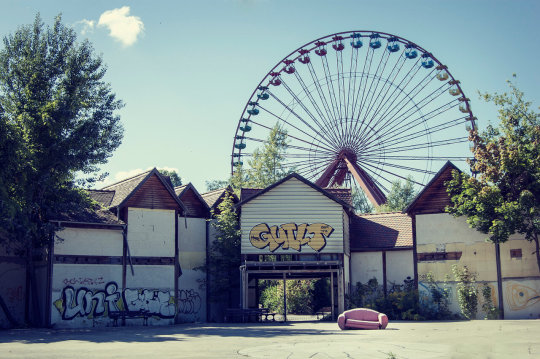


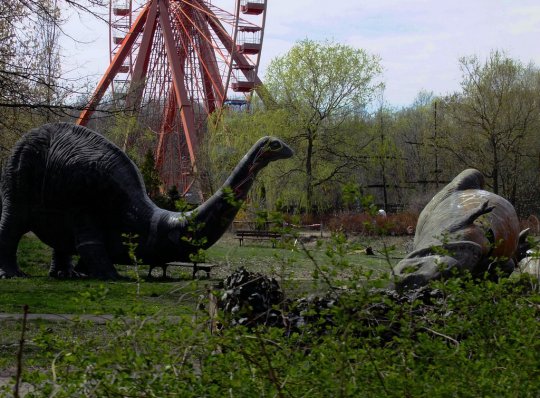
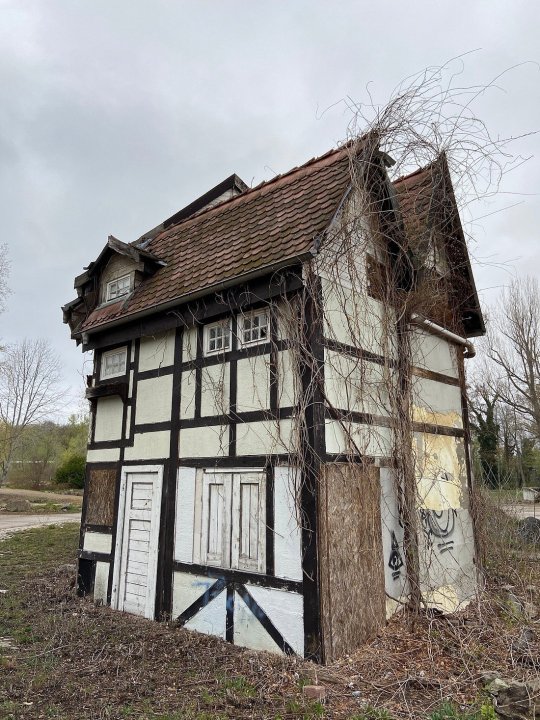






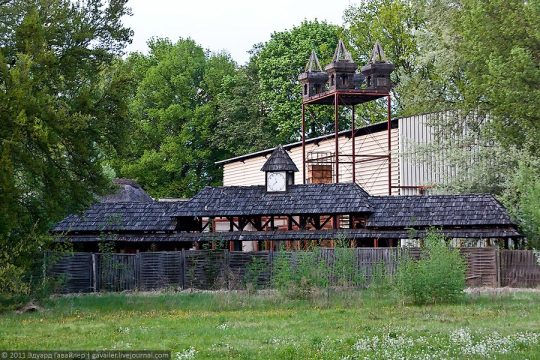

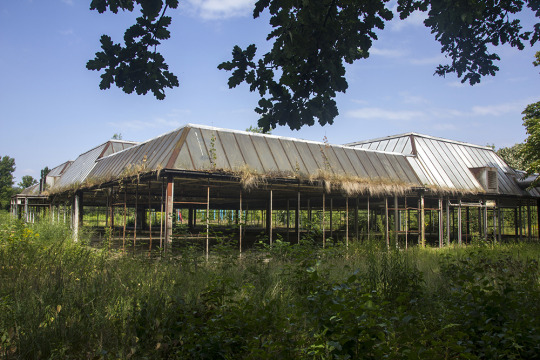


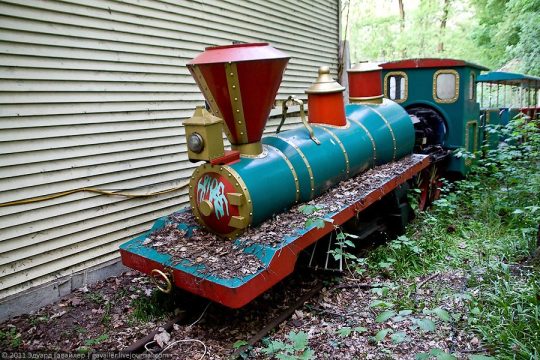
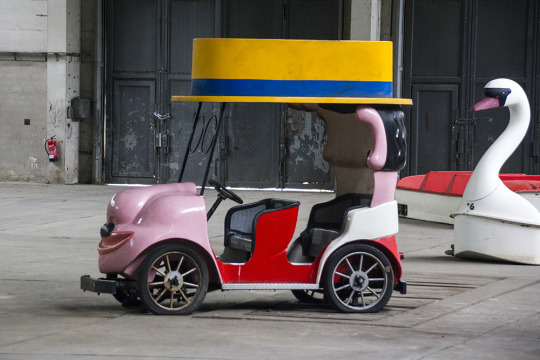
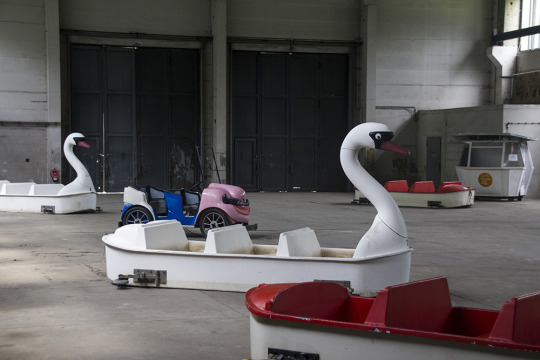

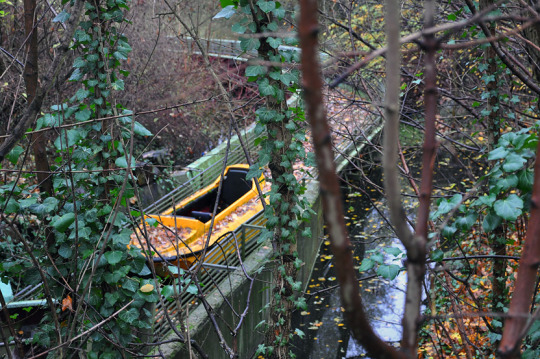


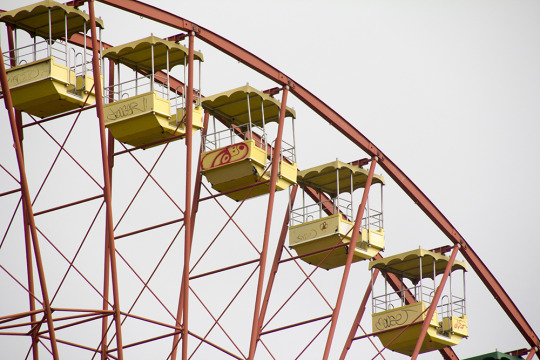

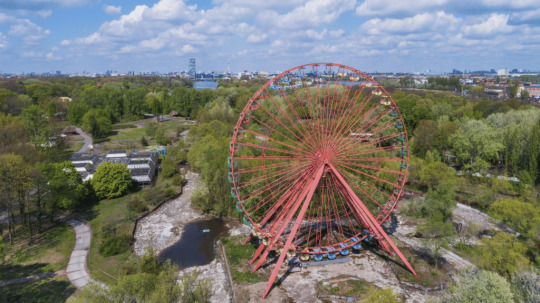
Одна из альтернативных достопримечательностей Берлина - Шпреепарк, заброшенный парк аттракционов с трагической судьбой.
Парк открыли в 1969 году на берлинском полуострове Плэнтервальд, и до 1989 года он оставался единственным парком развлечений в ГДР. Для учредителей было важно, что место несет не только увеселительный, но и образовательный характер.Так появилось название “Культурный парк” — Kulturpark Plänterwald. Кроме катания на аттракционах и американских горках в Kulturpark можно было сходить на концерт или танцевальный вечер.После объединения Германии стало понятно: старому парку не место в новом Берлине. Берлинский сенат организовал тендер среди подрядчиков, чтобы превратить уже не модный Культурный парк в настоящую мекку развлечений по лучшим западным образцам: в берлинский Диснейленд.
Новыми владельцами парка стала семья Витте. Они переименовали место в Spreepark («Парк у реки Шпрее»), закупили огромное количество новых аттракционов, ввели плату за вход в парк и устроили реорганизацию. Многие аттракционы они привезли из разорившегося французского парка Мираполис, в том числе знаменитую железную дорогу и карусель с чашками, на которых был изображен старый талисман компании Nesquik — кролик Groquik. Из Франции в Германию также переехали трех- и четырехметровые динозавры и два мамонта: огромные фигуры сра��у стали в Шпреепарке любимцами публики. Стегозавр, тираннозавр, апатозавр, стиракозавр с товарищами встречали гостей у входа в парк, возвышались над деревьями и приводили в восторг посетителей.
До 2000 года дела у Шпреепарка шли неплохо. Но цена билетов постоянно росла, при этом мест для парковки не хватало, а сами аттракционы стремительно старели. Число посетителей упало с полутора миллиона до четырехсот тысяч, у парка появились долги, и компанию-учредителя признали банкротом. И в 2001 году парк закрылся. Но на владельце Spreepark по-прежнему висел долг в € 11 млн, поэтому он решился…открыть новый парк! На этот раз в Перу, для чего он перенаправил туда шесть своих аттракционов. Но и там дело не пошло.
Сейчас в парке остались многие аттракционы, на которых можно сделать интересные фотографии. Самый большой аттракцион – колесо обозрения, до сих пор крутится благодаря ветру. Также здесь есть американские горки, ракеты, машинки. С марта 2019 года в Шпреепарке проводятся организованные экскурсии (на немецком и английском языках). Посетители могут ознакомиться с историей парка, осмотреть еще сохранившиеся аттракционы, постройки. Их продолжительность – 1,5 часа. Помимо этого, парк стал местом проведения различных выставок уличного искусства, вечеров и встреч с художниками и музыкантами.
One of Berlin's alternative attractions is Spreepark, an abandoned amusement park with a tragic fate.
The park opened in 1969 on Berlin's Planterwald peninsula, and until 1989 it remained the only amusement park in the GDR. It was important to the founders that the place not only had an entertaining, but also an educational character. This is how the name "Culture Park" - Kulturpark Plänterwald - appeared. In addition to riding the rides and roller coasters, you could go to a concert or dance evening in Kulturpark. After the unification of Germany, it became clear: the old park had no place in the new Berlin. The Berlin Senate organized a tender among contractors to turn the no longer fashionable Kulturpark into a real mecca of entertainment according to the best Western examples: Berlin Disneyland.
The Witte family became the new owners of the park. They renamed the place Spreepark, bought a huge number of new rides, introduced an entrance fee and reorganized the park. They brought many rides from the bankrupt French park Mirapolis, including the famous railway and the carousel with cups, which depicted the old mascot of the Nesquik company - the Groquik rabbit. Three- and four-meter dinosaurs and two mammoths also moved from France to Germany: huge figures immediately became favorites of the public in Spreepark. Stegosaurus, tyrannosaurus, apatosaurus, styracosaurus and friends greeted guests at the entrance to the park, towered over the trees and delighted visitors.
Until 2000, Spreepark was doing well. But the price of tickets was constantly rising, there was a shortage of parking spaces, and the rides themselves were rapidly aging. The number of visitors dropped from one and a half million to four hundred thousand, the park got into debt, and the parent company was declared bankrupt. And in 2001, the park closed. But the owner of Spreepark still had a debt of € 11 million, so he decided to… open a new park! This time to Peru, for which he redirected six of his rides there. But things didn’t work out there either.
Now the park still has many rides on which you can take interesting photos. The largest ride is the Ferris wheel, which still spins thanks to the wind. There are also roller coasters, rockets, cars. Since March 2019, Spreepark has been offering organized tours (in German and English). Visitors can learn about the history of the park, see the remaining rides and buildings. They last 1.5 hours. In addition, the park has become a venue for various street art exhibitions, evenings and meetings with artists and musicians.
Источник:/stalkers.info/zabroshennyj-park-attraktsionov-spreepark/, //www.gavailer.ru/journal/685.html,/ru-travel.livejournal.com / 27731230.html,/andrreas.livejournal.com/756034.html,/berlin24.ru/ru/news/novosti-germanii-segodnja-v-novostjah/6733-urban-trip-v-berline.html,/directfromberlin.wordpress.com/2018/09/14/abandoned-amusement-park-spreepark-in-berlin/,/samokatus.ru/shpreepark-ot-rascveta-do-zakata/.
#Berlin#Spreepark#amusement park#abandoned#attractions#carousel#railway#dinosaurs#ferris wheel#nature#pond#trees and forest#lost in time#photography#Берлин#Шпреепарк#парк аттракционов#аттракционы#железная дорога#карусель#колесо обозрения#динозавры#природа#пруд#заброшенные места#заброшенное#фотография
190 notes
·
View notes
Text
Spreepark is a derelict amusement park located on the outskirts of Berlin, abandoned and eerie. It has been abandoned for over 10 years. Throughout the park you can find remains of children’s rides and game stalls as well as life size dinosaur statues. The park was originally created and set in 1969 and was called Veb Kulturpark Planterwald. Set up by the Communist government in East Berlin. The park thrived throughout the communist era until the fall of the Berlin wall 20 years later. In 1991 Norbet Witte took over the park and renamed it ‘Spreepark’. Making many changes he transformed the amusement park, adding grass and water landscapes and bringing a line of new modern rides from the Mirapolis amusement park in Paris. Mr Witte changed the park numerous times and even added an English village. However it later came out that Norbet Witte was a controversial park manager and was involved in illegal activities such as smuggling cocaine, which he achieved by hiding it in parts of ride equipment that he shipped between Peru, Germany and Belgium. Due to this information surfacing the park was closed down in 2002. 2002 From 2002 the park remained shut down, with erosion and nature soaring throughout the park. Causing destructive damage and in 2014 a fire started by arson destroyed much of the equipment in the park. Due to this the government increased security on the site with new fences around the perimeter. Miraculously in 2016 a company put forward a plan to take over the park. To transform it into a location for arts and culture. The company Grun Berlin GmbH was owned by the city of Berlin. They forwarded the proposed plans in late 2018 and are considered to be implemented over several years. As of last year many of the attractions was removed. However some of the main features such as the large Ferris wheel and rollercoaster remain. Along with the restaurant from the very first year of the park being open, and a water ride, carousel and cinema from the takeover period. The park was the only of its kind in the communist era. Covering around 74 acres it welcomed around half a million visitors per year at its peak popularity. The Ferris wheel (photographed above) was the parks most popular feature. Being upgraded in 1989 to celebrate the 40th anniversary. Adding more cabins to the ride and increasing the height of the structure . Read the full article
0 notes
Photo
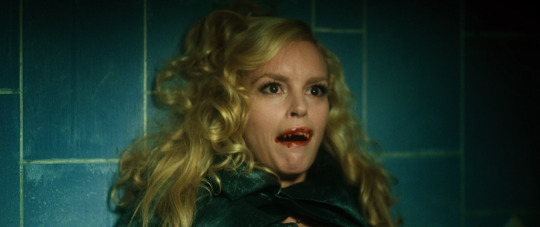
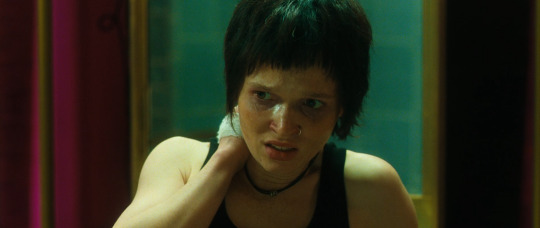

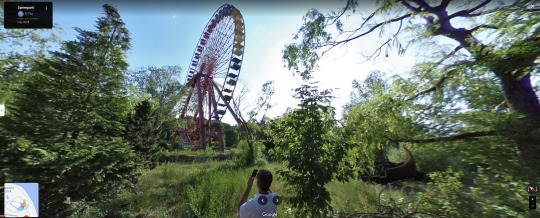
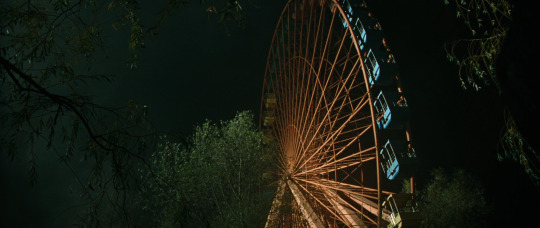
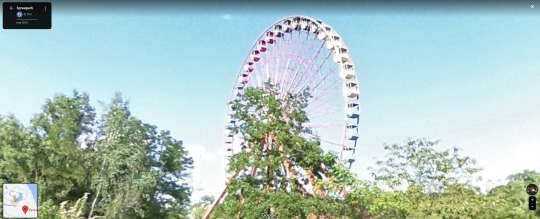
Wir Sind die Nacht / We are the Night Dennis Gansel. 2010
Abandoned Amusement Park Kiehnwerderallee 1-3, 12437 Berlin, Germany See in map
See in imdb
Bonus: also in this location
#dennis gansel#wir sind die nacht#we are the night#karoline herfurth#nina hoss#vampire#spreepark#ferris wheel#amusement park#dinosaur#mammoth#triceratops#movie#cinema#treptowerpark#berlin#germany#location#google maps#street view#2010#bonus
35 notes
·
View notes
Photo
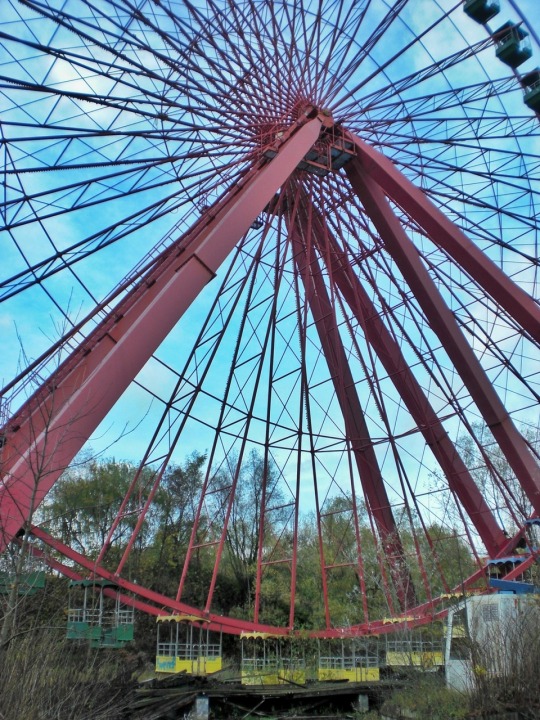
#abandoned#ferris wheel#spreepark#berlin#europe#lost place#original photography#phtotographers on tumblr
46 notes
·
View notes
Photo

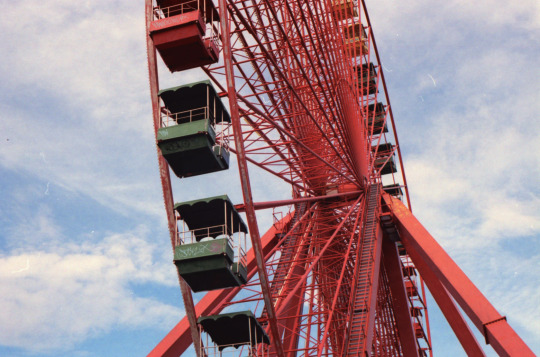
Me and my boyfriend often visit Berlin, if you are following me for a long time you know. I always wanted to go to Spreepark, but it never happend until Sunday the 27th!
This park knows quite a history!
I am happy that I’ve seen it before it is completely gone. Too bad some things are vandalised or gone.
https://www.instagram.com/helenageurink/?hl=es-la
#35 mm film#35mm#35mm photography#film photography#film is not dead#analogue#Berlin#spreepark#riesenrad#ferris wheel#abandoned#abandoned places
19 notes
·
View notes
Video
youtube
On a windy night, the old ferris wheel creaks to life. Groaning as if it is recalling memories from a happier time...
This is the story of Spreepark, the former communist amusement park that sits abandoned. It’s history is full of dodgy deals, drug trafficking and arson, but could there be salvation in its future?
Idle and Abandoned’s very first podcast is now live on YouTube and major Podcasting sites (Apple, Spotify, Google, Amazon, iHeartRadio, etc).
Let’s explore the story behind Spreepark.
6 notes
·
View notes
Note
Part2 I once entered the Spreepark in Berlin with three friends of mine, which is an amusement park,that was closed in 2000 ->horror movie feelings.The big goal is to reach the big ferris wheel in the middle without getting caught by the guards. We nearly arrived at it, when two guards saw us (you know, I got red hair, and it's so bright, I am not very good at sneaking). Since then, I know,my true skill is running... very fast.lets say, it's a skill, not that I am a fraidy-cat. Hugs Zuendwinkel
OMG! You are a real delinquent! :D Seems like you’re a fan of urban exploration, noice! Thank you for sharing!
6 notes
·
View notes
Note
S and 16?
s. Heavy + 16. “I failed.”
The canoe, too heavy for any of them to manage alone, rested on the mud halfway into the Spree and halfway in the weeds that lined its bank. After paddling in literal circles for the past two hours, none of them had the slightest interest in hauling it another centimeter.
Frederick stood closest to their discarded craft, but his hands remained at his sides, clenched into fists.
“I’ve failed you.”
“Hardly,” said Titania as she undid her dampened braid in hopes the wind would help dry it out. “We didn’t capsize.”
“We’ve just taken two hours to get to a waypoint that should’ve taken thirty minutes and completely lost sight of our comrades,” said Seth. It sounded a tad judgmental, but that was just Seth being factual. Then again, sometimes there wasn’t a difference.
“I just don’t understand... with my experience...”
They’d elected Frederick to steer because he had more experience on the water than the rest of them put together. Nobody said out loud that Frederick’s experience had worked against them since he’d been trying to actively steer and convinced he’d been doing a fair job of it, when just trailing the paddle lightly in the water like a novice would’ve sufficed. But they were thinking it. Finn was so obviously thinking it that he turned around and walked some distance into the chest-high wildflowers that lined this strangely undeveloped part of the river.
After several minutes resting in the sun, Seth and Titania dragged the canoe a little more up the bank while Frederick got into their waterproof pouch and busied himself laying out the snacks that he’d brought along.
“Finn?” Titania called into the vegetation. “We may as well have a bit to eat now in case we’re late for dinner...”
A creak of metal, like the grinding of ancient, massive gears, answered her. Titania followed the faint path through the wildflowers, which swarmed with pale butterflies that might’ve seemed ghostly had she not recognized them as ordinary pests of the cabbage field. Still, she wasn’t prepared for the twisted fallen shape that lay where the meadow turned to the remains of a parking lot. Scaly skin and terrible teeth-- a dragon or a dinosaur, its belly covered in graffiti.
“Finn?”
A gust of wind tugged at her hair and another metallic groan pierced the air.
Now she could see what had Finn’s attention. The Ferris wheel, its bright primary colors still striking amid decay, spun few degrees in the wind and made a sound fit for nightmares.
“It’s Spreepark,” Finn said, his gaze stlll fixed on a blue gondola dangling near the top of the wheel. “I’ve been here before... a long time ago, of course. It wasn’t like this.”
“Well,” said Titania. “It looks like we’ve embarked on another unexpected adventure.”
(This Could Be Us, European Summer Vacation outtake)
5 notes
·
View notes
Text
spreepark
G
1.3k
Reclaiming the spirit of adventure in an abandoned amusement park. Or, the Berlin urbex fic no one asked for.
(I have no reason to believe that Dan and/or Phil have ever broken German law.)
ao3
The vlogbrothers video is The Abandoned Ferris Wheel Spins Anyway, fyi.
All thanks and love to @waveydnp for some quality betaing and a lot of moral support, always.
62 notes
·
View notes
Text
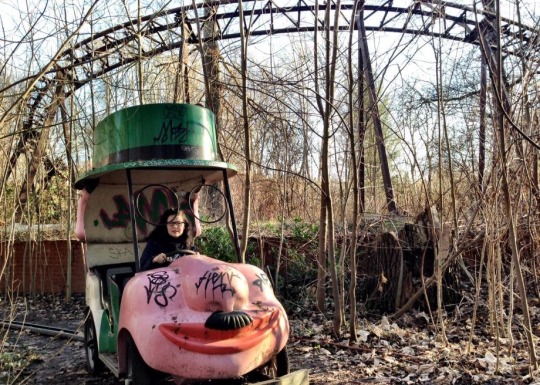



This is another abandoned place which is located in east Berlin, Germany. It is called spreepark which used to be a theme park. Spreepark is a former amusement park it was opened in 1969 and closed in 2002. They entertainment park opened in 1969 as Kulturpark, covering an area of 29.5 hectares. The area is situated in the north of Planterwald, next to the river Spree. It was the only constant entertainment park in the GDR, and the only such park in either east or West Berlin. It was completed by 1991, after the reunification, by mixed municipal authorities in Berlin. Out of a total of seven applicants, the spreepark Berlin company received the contract. Crucially, the references of Norbert Witte of the company were not properly checked. New attractions were added and visitor numbers reached 1.5 million per annum. Later, the concept was changed, and the park was gradually transformed into a more western style amusement park. An entrance fee covering all individual attractions was charged, instead of visitors paying for each individual ride, as had previously been the case. The surface around the Ferris wheel was taken up and converted into a water landscape. Roller coasters, two game courses, a stage, a western town and an English village were later added to the park. The beginning of 1999, the park had to cope with large debts. The increase in the admission fee per person and the lack of parking contributed to a drop in visitor numbers, until in 2001, only 400,000 visitors entered the park. Again in 2001, spreepark announced that they were insolvent. Since 2002, the park has not opened for visitors. In august 2002, the park was declared insolvent. Debts at a level of 11,000,000 euros remained, and the area was allowed to fall into disrepair. The Ferris wheel still stands but has not operated since the parks closure; likewise, the remains of other attractions can still be found on the site. In 2011, a scene for the action film ‘hanna’ was filmed at the park, as well as the music video for the single “run dry” by German band ‘sizarr’ after 2011, guided tours were offered to the public at restricted times. In march 2014, the city of Berlin bought the spreepark, and guided tours ended. Their plan was to restore the theme park and to present it to the public in 2018 and they restored it with an overlay of cultural and ecological content. On the evening of 10th august 2014, major parts of the park were destroyed in a fire. Reports indicated that firefighters discovered two blazes 200m apart that soon merged. This indicates that the fires may have been deliberately set.
1 note
·
View note
Text
self/noise #4: «Augmented Spatiality» (2013-09-11)

En este programa, nos acercamos a «Augmented Spatiality», un proyecto expositivo sobre espacio público, espacialidad y arte sonoro comisariado por María Andueza entre los pasados días 31 de agosto y 5 de septiembre en el barrio de Hökarangën, Estocolmo.
«Augmented Spatiality» es un proyecto de arte público sonoro. Recogiendo la noción de espacialidad de Edward Soja, María Andueza ha planteado un proyecto que investiga la relación entre piezas de arte efímeras y sonoras y las condiciones del espacio público en esta zona de la ciudad. Para Edward Soja, geógrafo y urbanista, la «espacialidad» es aquella cualidad del espacio que es inherentemente social. (Idea que él, a su vez, recoge de la teoría de la producción social de espacio de Henri Lefebvre).
El proyecto en sí está distribuido por diferentes espacios públicos y locales del barrio de Hökarängen, evitando así una recepción expositiva normal. En «Augmented Spatiality» hay diversos proyectos que abordan la relación entre lo sonoro y el espacio público, por artistas como Hong-Kai Wang, Trond Lossius, Iván Argóte, Cecilia Jonsson, Konsthall 323, Playing the Space, y una Gentrified Improvisation (improvisación gentrificada) colectiva, así como un seminario.
Aparte de estos eventos, producidos y circunscritos al área local de «Augmented Spatiality», María Andueza también comisarió una sesión de escucha, la «Listening Section», como algo que, de alguna manera, hiciera presentes en Hökarängen trabajos, piezas y espacios sonoros de otros artistas y lugares. Lo hizo de una manera particular: ella se limitó a invitar a tres artistas (entre los que, cartas sobre la mesa, me incluyo), que a su vez tenían el deber de invitar a otro artista cuyo trabajo consideraran que pudiera aportar una reflexión interesante a esta investigación sobre la relación entre sonido y espacialidad. Esta secuencia se repetía hasta llegar a cinco artistas, de manera que ni la comisaria del evento, ni los artistas en sí podían predeterminar la totalidad de participantes. El efecto ha sido muy interesante, ya que en algunos casos las invitaciones se han realizado por afinidad y en otros, por diferencia. Hay tres líneas de comisariado en esta «Listening Section», o tres «columnas», como las define el proyecto, que a su vez definen tres listas de reproducción. La primera fue la que inicié yo, la segunda fue iniciada por Anna Raimondo, y la tercera fue iniciada por Edu Comelles.
Unos días previos al arranque de «Augmented Spatiality» tuve la oportunidad de entrevistar a María Andueza para este programa, y la entrevista se convirtió en una interesante conversación sobre las implicaciones del trabajo sonoro en el espacio público, la gentrificación, y demás aspectos de esta iniciativa.
También emitimos las tres «columnas» de la Listening Section, con Anna Raimondo, Younes Baba-Ali, Simohammed Fetakka, Mohammed Laouli, Mustapha Akrim, Edu Comelles, Juanjo Palacios, El sueño de Tesla, Camilo Cantor, Albert Murillo, Raúl Hinojosa,Acoustic Mirror, Pablo Sanz, Katrinem, O+A, y Peter Cusack.
Playlist
Entrevista con María Andueza, parte 1
Augmented Spatiality, Listening Section: Columna 2:
Anna Raimondo: «In Between»
Younes Baba-Ali: «Tout le monde s'appelle Mohamed 1»
Younes Baba-Ali: «Tout le monde s'appelle Mohamed 2»
Simohammed Fetakka: «La Revolution de Dimanche»
Mohammed Laouli: «Sarf»
Mustapha Akrim: «Hit After Hit»
Entrevista con María Andueza, parte 2
Augmented Spatiality, Listening Section: Columna 3:
Edu Comelles: «0 Responsables [03.06.13]»
Juanjo Palacios: «Mower Noise»
Tesladream: «Acoustic Mordor #22Mmlg atravesando Túnel de la Alcazaba»
Camilo Cantor «A cinco - los sonidos invisibles de la ciudad»
Albert Murillo: «Tobogán»
Raúl Hinojosa: «Mari, que te quiero!»
Entrevista con María Andueza, parte 3
Augmented Spatiality, Listening Section: Columna 1
Acoustic Mirror: «Madrid #GlobalNoise #13O (edit)»
Pablo Sanz: «52°4'35"N 4°19'52"E»
Katrinem - «path_of_awareness_braunschweig (excerpt)»
O+A: «Rotterdam (Erasmusbridge june 2001)»
Peter Cusack: «Symphony of Groans, Abandonned Ferris Wheel, Spreepark, Berlin»
-----
self/noise se emite el segundo miércoles de cada mes en Ágora Sol Radio (http://wwww.agorasolradio.org) entre las 22:00 y las 24:00.
Podéis suscribiros a nuestro podcast en iVoox: http://www.ivoox.com/podcast-self-noise-radio_sq_f160846_1.html
También podéis acceder a nuestro archivo en Internet Archive: https://archive.org/details/selfnoise
Podéis seguirnos también en:
Twitter: http://twitter.com/selfnoise
Tumblr: http://self-noise-project.tumblr.com
Facebook: https://www.facebook.com/pages/Selfnoise
Y podéis, por supuesto, escribirnos a [email protected]
* Publicado originalmente el 2013-09-12.
0 notes
Text
Spreepark is a derelict amusement park located on the outskirts of Berlin, abandoned and eerie. It has been abandoned for over 10 years. Throughout the park you can find remains of children’s rides and game stalls as well as life size dinosaur statues. The park was originally created and set in 1969 and was called Veb Kulturpark Planterwald. Set up by the Communist government in East Berlin. The park thrived throughout the communist era until the fall of the Berlin wall 20 years later. In 1991 Norbet Witte took over the park and renamed it ‘Spreepark’. Making many changes he transformed the amusement park, adding grass and water landscapes and bringing a line of new modern rides from the Mirapolis amusement park in Paris. Mr Witte changed the park numerous times and even added an English village. However it later came out that Norbet Witte was a controversial park manager and was involved in illegal activities such as smuggling cocaine, which he achieved by hiding it in parts of ride equipment that he shipped between Peru, Germany and Belgium. Due to this information surfacing the park was closed down in 2002. 2002 From 2002 the park remained shut down, with erosion and nature soaring throughout the park. Causing destructive damage and in 2014 a fire started by arson destroyed much of the equipment in the park. Due to this the government increased security on the site with new fences around the perimeter. Miraculously in 2016 a company put forward a plan to take over the park. To transform it into a location for arts and culture. The company Grun Berlin GmbH was owned by the city of Berlin. They forwarded the proposed plans in late 2018 and are considered to be implemented over several years. As of last year many of the attractions was removed. However some of the main features such as the large Ferris wheel and rollercoaster remain. Along with the restaurant from the very first year of the park being open, and a water ride, carousel and cinema from the takeover period. The park was the only of its kind in the communist era. Covering around 74 acres it welcomed around half a million visitors per year at its peak popularity. The Ferris wheel (photographed above) was the parks most popular feature. Being upgraded in 1989 to celebrate the 40th anniversary. Adding more cabins to the ride and increasing the height of the structure . Read the full article
0 notes
Photo

With its history and design, you’re never more than a few blocks from greenspace in Berlin. The city contains forested areas and lakes large enough to hide the city, and is fully encompassed by a parkway, but its best parks all lie within its inner ring. No two locals have the same favorite park, as they run the gamut from hip Mauerpark, to charming Volkspark Friedrichshain. Park am Gleisdreickpark and Tempelhofer Feld attract picnickers and athletes alike, while Preussenpark is home to gourmands every weekend. From their ruins to their memorials, each of these parks makes the city’s history plain to see.
Mauerpark
Once covered by the Berlin Wall, Mauerpark (“Wall Park”) now hosts the city’s most popular flea market every Sunday. Located at the end of the Berlin Wall memorial strip, the market attracts some of the city’s most popular street food stands, while the park’s long grassy strip is home to a wide variety of buskers and picnicking locals. The park’s most unusual attraction is an amphitheater built into the side of a hill, famous for its karaoke sessions (starting at 3), with crowds of hundreds singing along (mostly in key).
Ten minutes down the street is the Kulturbrauerei (“Culture Brewery”), which hosts a quieter street food market every Sunday. An example of industrial architecture at its best, the courtyard of this massive former brewery is more upscale and attracts neighboring families. The compound includes an art cinema, galleries, theaters, restaurants, clubs, and museum devoted to everyday life in East Germany. In December, it hosts one of the city’s most popular Christmas markets.
Preussenpark
Every weekend, Preussenpark (“Prussian Park”) becomes the city’s most beloved food destination, known as Thaiwiese (“Thai Lawn”) or Thaipark. If you visit, you’ll find a park with dozens of women sitting on stools beneath umbrellas, preparing and selling food and drinks at low prices, as locals nap and chat between courses. This impromptu market takes place between the flea market above the Fehrbelliner Platz subway station, and the playground next to the Konstanzer Strasse subway station.
Treptower Park
Running along the Spree River, Treptower Park is popular with families out for a stroll, and the home port for many of the city’s tour boats. If you follow the river upstream, you’ll soon come to the Island of Youth, a small island connected by a beautiful bridge that arches across the river, with towers on either side. The island has an outdoor cafe and bar that hosts an open-air cinema in the summer. Further on lies a forest that hides the Spreepark, an abandoned amusement park. Even if you can’t catch one of the occasional tours of Spreepark, you can still peek through the fence of glimpses of its rides, dinosaur statues, and a Ferris wheel visible from far beyond the park.
The park’s main attraction is the largest of the city’s three Soviet war memorials. Built in the late 40s on the grounds of a mass grave for Soviet soldiers, the memorial grounds are a masterpiece of Stalinist architecture. After passing through large gates, kneeling statues, and red granite portals, visitors come to an area lined by trees and stone sarcophagi with carvings of quotes from Stalin, and reliefs of military scenes. The focus of the memorial is a 40-foot statue of a Soviet soldier holding a rescued German child on one hand, and a sword in the other. The soldier stands atop a crushed swastika, and the statue atop a hill overlooking the park and the city itself. While normally quiet, this park is the center of Victory Day celebrations held on May 9th by the local Russian community.
Volkspark Friedrichshain
The city’s third-largest park, the Friedrichshain People’s Park was a showcase for East Berlin. A stream with waterfalls popular with children leads to a lake next to a Peace Bell from Hiroshima. The park is home to other memorials, the largest of which commemorate volunteers who fought against fascism in Poland and Spain. Beneath the park’s two hills lie WWII flak towers and air-raid shelters. Too sturdy to be fully demolished after the war, they were instead covered by debris from nearby ruins. On hot days, families bring their children to the Märchenbrunnen, “Fairytale Fountains” that depict animals and characters from various legends.
Tempelhofer Feld
Built on former Knights Templar parade grounds, Tempelhof Airport was Europe’s second-oldest airport. After closing in 2008, it was resurrected as one of the city’s most popular parks. Tours are available of the terminal and hangers, which resemble an eagle with outstretched wings from the air, and which formed one of the world’s largest buildings upon their completion in the 1930s. Tempelhof was the center of the Berlin Airlift, as commemorated by an American DC-3 “Raisin Bomber.” The tarmac and runways provide ample room for any sports involving wheels, while grassy areas host many barbecues and picnics. One runway is devoted to wind sports, such as kiteboarding, while there is a community garden area and often a circus in summer, near a beer garden and a public pool. The airport also contains the world’s only field for “Boffer,” a sport involving foam weapons based on a post-apocalyptic cult film from the 80s.
Viktoriapark
Located on the edge of the Bergmannkiez neighborhood, which survived WWII largely intact, Viktoriapark is built around a steep hill. This elevation is crowned by a monument commemorating the Wars of (German) Liberation from Napoleon, which provides one of the city’s best views. From the memorial, an artificial waterfall runs to the base of the hill. The park is also home to the city’s last remaining vineyard, although Berlin’s homegrown wine is the subject of many jokes, and bottles of wine are not sold by the park’s hobbyist vintners.
Park am Gleisdreieck
Starting next to Potsdamer Platz, Gleisdreieck Park covers the grounds of what was once one of the city’s main rail yards, which served a railroad station that ended up on the other side of the Berlin Wall. The space feels cool and futuristic, with trains passing by overhead and emerging from a tunnel running to the main train station. Abandoned sections of track run between copses, playgrounds, volleyball courts, and gardens maintained by Balkan refugees who came to Berlin in the 90s. Dozens of disused railroad bridges cross a street that bisects the park, giving an idea of former rail yard’s size. Built on the grounds of a former train maintenance area, the German Museum of Technology, near the park’s center, is worth a visit. If you have a bike, we recommend following the park to its southern tip, then taking a new bike path along the active tracks past Südkreuz station to the Schöneberger Südgelände. This nature park encompasses another abandoned rail yard, but has kept its tracks intact. Südgelände also features tunnels, steam engines, and a roundhouse turned into an art venue.
What’s your favorite Berlin park?
If you’ve been to Berlin already which was your favorite? If you’re planning a Berlin, a Park for Every Personality appeared first on Jayway Travel.
0 notes
Photo

Wheel Of Fortune
1 note
·
View note
Photo

Spreepark, Berlin - Spreepark was an entertainment park in Berlin. It was closed in 2001 due to huge debts. Today, it lies abandoned and overgrown - although illegal, many jump the fences and trespass on a daily basis, avoiding the German security and guard dogs. The spookiest thing about this park is that the ferris wheel still moves without any power.
A prime example of nature having the power to completely take over something man-made if there is no intervention - quite literally a scene out of a ‘I Am Legend’-esque movie.
(ToddGilesPhotography)
0 notes